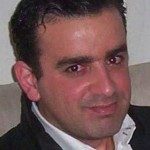Lien vers Pubmed [PMID] – 23966855
Lien DOI – 10.1371/journal.ppat.1003519
PLoS Pathog 2013 Aug; 9(8): e1003519
Sfl1p and Sfl2p are two homologous heat shock factor-type transcriptional regulators that antagonistically control morphogenesis in Candida albicans, while being required for full pathogenesis and virulence. To understand how Sfl1p and Sfl2p exert their function, we combined genome-wide location and expression analyses to reveal their transcriptional targets in vivo together with the associated changes of the C. albicans transcriptome. We show that Sfl1p and Sfl2p bind to the promoter of at least 113 common targets through divergent binding motifs and modulate directly the expression of key transcriptional regulators of C. albicans morphogenesis and/or virulence. Surprisingly, we found that Sfl2p additionally binds to the promoter of 75 specific targets, including a high proportion of hyphal-specific genes (HSGs; HWP1, HYR1, ECE1, others), revealing a direct link between Sfl2p and hyphal development. Data mining pointed to a regulatory network in which Sfl1p and Sfl2p act as both transcriptional activators and repressors. Sfl1p directly represses the expression of positive regulators of hyphal growth (BRG1, UME6, TEC1, SFL2), while upregulating both yeast form-associated genes (RME1, RHD1, YWP1) and repressors of morphogenesis (SSN6, NRG1). On the other hand, Sfl2p directly upregulates HSGs and activators of hyphal growth (UME6, TEC1), while downregulating yeast form-associated genes and repressors of morphogenesis (NRG1, RFG1, SFL1). Using genetic interaction analyses, we provide further evidences that Sfl1p and Sfl2p antagonistically control C. albicans morphogenesis through direct modulation of the expression of important regulators of hyphal growth. Bioinformatic analyses suggest that binding of Sfl1p and Sfl2p to their targets occurs with the co-binding of Efg1p and/or Ndt80p. We show, indeed, that Sfl1p and Sfl2p targets are bound by Efg1p and that both Sfl1p and Sfl2p associate in vivo with Efg1p. Taken together, our data suggest that Sfl1p and Sfl2p act as central “switch on/off” proteins to coordinate the regulation of C. albicans morphogenesis.




